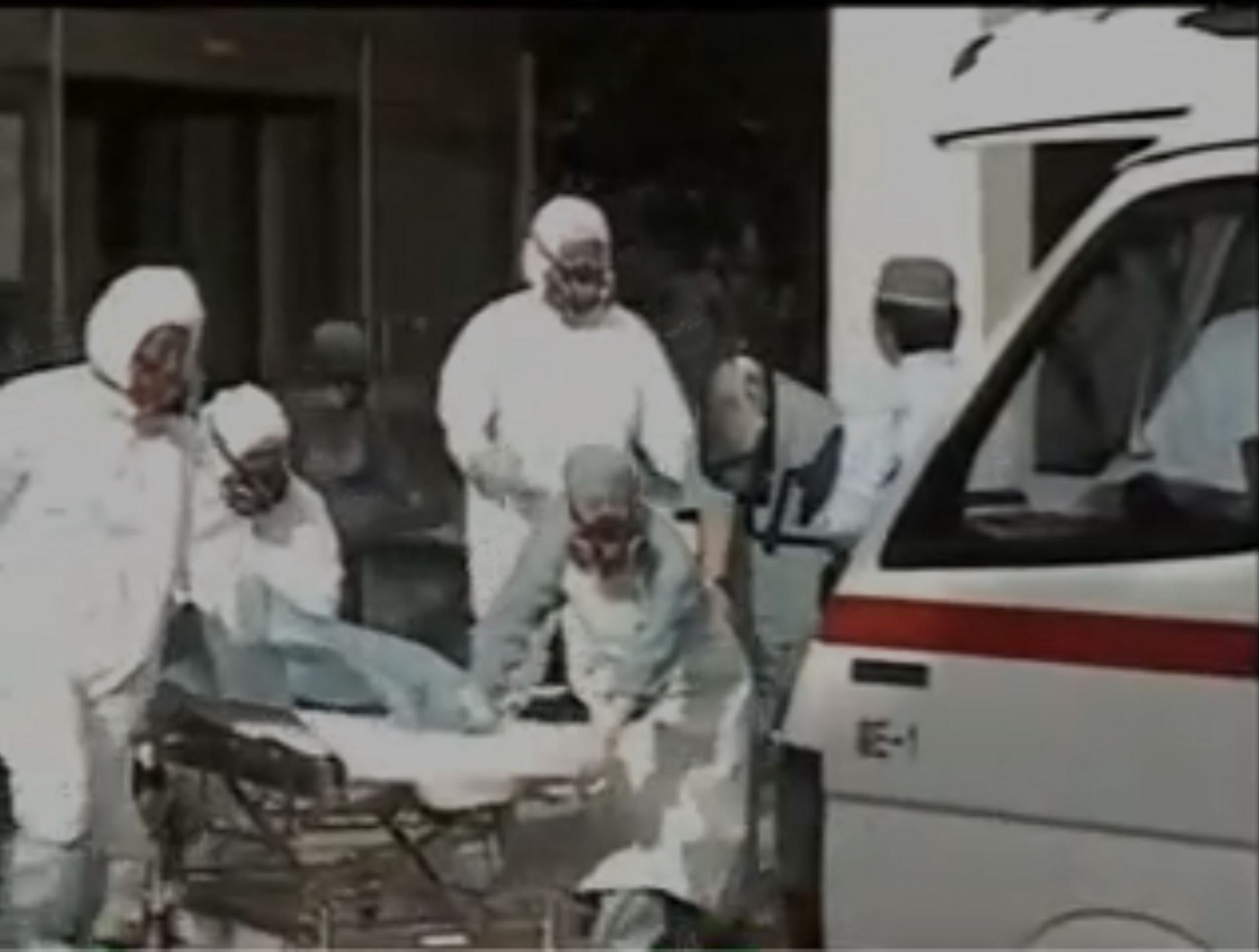When we delve into the history of nuclear accidents, the name Hisashi Ouchi may not be the first to come to mind. However, his story is one of profound emotional weight and a stark reminder of the human cost of industrial negligence. Hisashi Ouchi's life was tragically altered by one of Japan's most catastrophic nuclear incidents, and the images that have emerged from his ordeal have left an indelible mark on public consciousness. In this article, we will explore Hisashi Ouchi's life, examine the circumstances surrounding the accident, and analyze the impact of the visuals, including the infamous Hisashi Ouchi photo, on public perception.
Hisashi Ouchi was a devoted nuclear worker whose fate was forever changed by the negligence that led to the Tokaimura nuclear accident in 1999. This event not only transformed his life but also prompted critical discussions about regulatory oversight and the safety standards within Japan's nuclear industry. As we explore Ouchi's biography and the tragic sequence of events, we will also consider how media portrayals, particularly the haunting images of his suffering, have influenced public awareness and empathy.
By examining the Hisashi Ouchi photo and other related visuals, we gain deeper insights into the human dimension of this tragedy. These images compel us to reflect on the consequences of industrial accidents and the lessons they impart about safety in the nuclear sector. Join us as we address these critical questions and honor the memory of a man whose life was defined by both resilience and profound adversity.
Read also:Exploring The Life And Love Of Miranda Hart A Journey Through Comedy And Romance
Who Was Hisashi Ouchi?
Born on March 1, 1964, in Japan, Hisashi Ouchi was a skilled nuclear plant worker at the JCO (Japan Nuclear Fuel Conversion Company) facility in Tokaimura. Known for his dedication and expertise, Ouchi was a respected member of his team. However, fate intervened tragically, altering the course of his life in an instant.
What Happened on That Fateful Day?
On September 30, 1999, a criticality accident unfolded at the JCO facility. This disaster occurred when workers improperly mixed uranium solutions, initiating a nuclear chain reaction. Ouchi was one of the three workers exposed to lethal doses of radiation that day. The accident resulted in severe injuries, setting off a prolonged and excruciating battle for survival.
What Were the Medical Consequences for Hisashi Ouchi?
Ouchi suffered from acute radiation syndrome, which inflicted catastrophic damage to his internal organs and immune system. His treatment involved extensive medical interventions, including multiple blood transfusions, skin grafts, and cutting-edge therapies. Despite the relentless efforts of medical professionals, his condition continued to deteriorate, leading to a slow and agonizing demise.
| Personal Details | Bio Data |
|---|---|
| Name | Hisashi Ouchi |
| Date of Birth | March 1, 1964 |
| Occupation | Nuclear Plant Worker |
| Accident Date | September 30, 1999 |
| Location | Tokaimura, Japan |
| Length of Suffering | 83 days |
| Date of Passing | December 21, 1999 |
How Has Hisashi Ouchi's Photo Impacted Public Perception?
The Hisashi Ouchi photo, which emerged during the coverage of his tragedy, serves as a poignant reminder of the human cost of industrial accidents. This image captures the suffering of an individual, evoking empathy and outrage among the public. Such visuals have a profound impact on societal views, often shaping opinions about nuclear energy and safety regulations.
What Lessons Can We Learn from Hisashi Ouchi's Tragedy?
The tragedy of Hisashi Ouchi underscores the critical need for robust safety measures in the nuclear industry. It raises essential questions about worker protection and the ethical responsibilities of corporations and governments in ensuring the safety of their employees. This incident highlighted the devastating consequences of negligence and the importance of adhering to stringent safety protocols.
How Can We Honor Hisashi Ouchi's Memory?
To honor Hisashi Ouchi's legacy, we must advocate for enhanced safety standards in the nuclear industry. This includes promoting transparency, comprehensive worker training, and robust emergency preparedness. Sharing his story and the haunting Hisashi Ouchi photo can serve as a powerful call to action, reminding us of the human lives at stake in the pursuit of energy and progress.
Read also:Mamitha Baiju A Rising Star In The Entertainment World
What Role Do Visuals Play in Understanding Tragedies?
Visuals like the Hisashi Ouchi photo play a pivotal role in shaping how we perceive and understand tragedies. They bring to life the human aspect of industrial disasters, often overshadowed by technical data and statistics. Such images evoke empathy and inspire individuals and communities to advocate for change, fostering a deeper awareness of the risks involved in nuclear operations.
Why Is It Important to Share Hisashi Ouchi's Story?
Sharing the story of Hisashi Ouchi is crucial for multiple reasons. It honors his memory and raises awareness about the potential dangers of nuclear energy and the importance of workplace safety. By disseminating this narrative, we contribute to a collective understanding that prioritizes human lives over profit-driven priorities.
Can We Prevent Future Accidents Through Awareness?
While eliminating all risks associated with nuclear energy may be challenging, raising awareness can significantly reduce the likelihood of future accidents. Education and advocacy empower workers, policymakers, and the public to demand better safety practices and regulations. The legacy of Hisashi Ouchi can serve as a powerful catalyst for change in the nuclear industry.
In conclusion, the story of Hisashi Ouchi is a poignant reminder of tragedy, resilience, and the urgent need for action. By understanding his biography, the circumstances surrounding his accident, and the impact of visuals such as the Hisashi Ouchi photo, we can foster greater awareness of the importance of safety in the nuclear industry. As we reflect on his life and legacy, let us commit to ensuring that such tragedies never happen again, honoring his memory through meaningful change.


